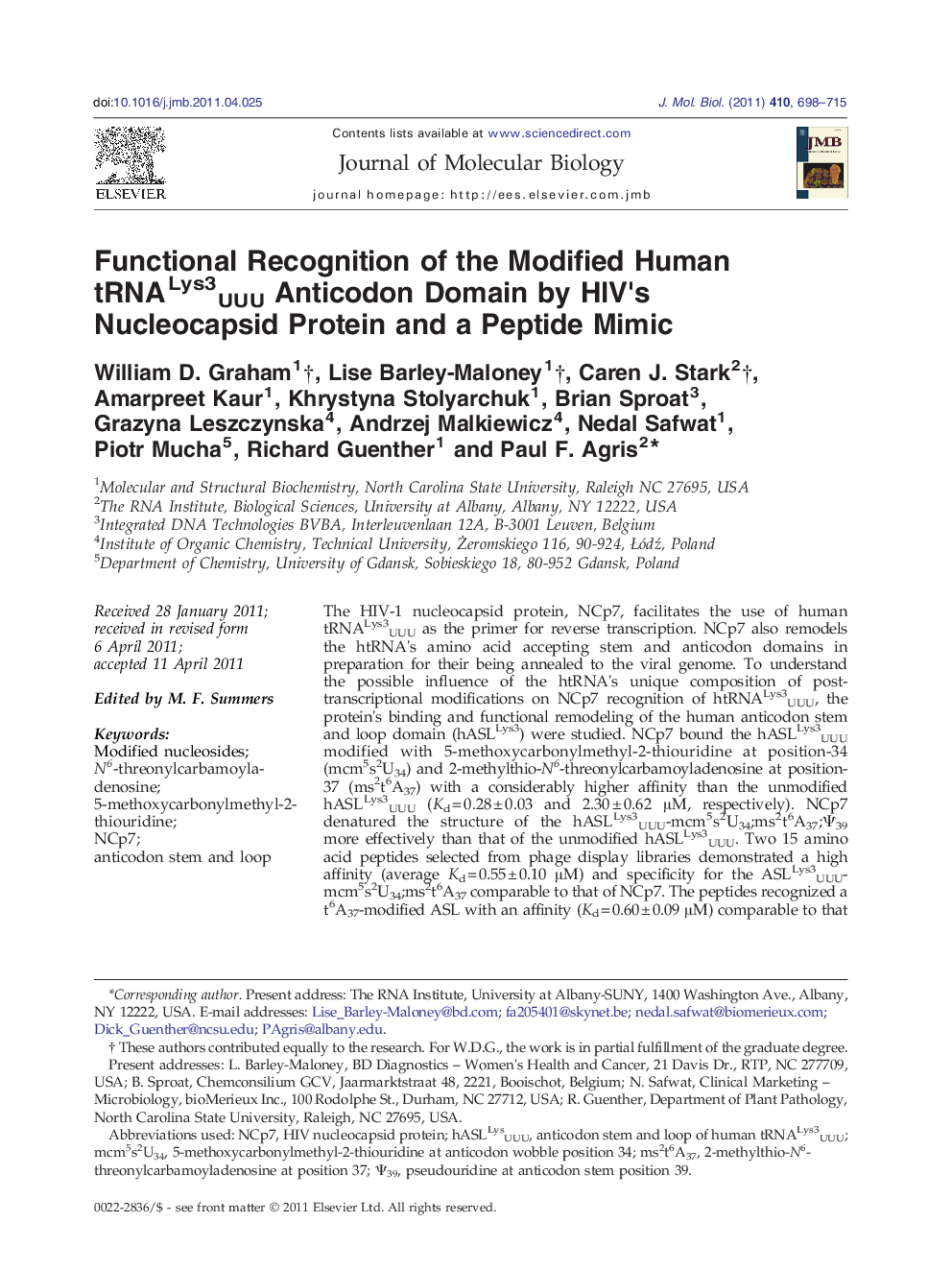| کد مقاله | کد نشریه | سال انتشار | مقاله انگلیسی | نسخه تمام متن |
|---|---|---|---|---|
| 2185116 | 1095960 | 2011 | 18 صفحه PDF | دانلود رایگان |

The HIV-1 nucleocapsid protein, NCp7, facilitates the use of human tRNALys3UUU as the primer for reverse transcription. NCp7 also remodels the htRNA's amino acid accepting stem and anticodon domains in preparation for their being annealed to the viral genome. To understand the possible influence of the htRNA's unique composition of post-transcriptional modifications on NCp7 recognition of htRNALys3UUU, the protein's binding and functional remodeling of the human anticodon stem and loop domain (hASLLys3) were studied. NCp7 bound the hASLLys3UUU modified with 5-methoxycarbonylmethyl-2-thiouridine at position-34 (mcm5s2U34) and 2-methylthio-N6-threonylcarbamoyladenosine at position-37 (ms2t6A37) with a considerably higher affinity than the unmodified hASLLys3UUU (Kd = 0.28 ± 0.03 and 2.30 ± 0.62 μM, respectively). NCp7 denatured the structure of the hASLLys3UUU-mcm5s2U34;ms2t6A37;Ψ39 more effectively than that of the unmodified hASLLys3UUU. Two 15 amino acid peptides selected from phage display libraries demonstrated a high affinity (average Kd = 0.55 ± 0.10 μM) and specificity for the ASLLys3UUU-mcm5s2U34;ms2t6A37 comparable to that of NCp7. The peptides recognized a t6A37-modified ASL with an affinity (Kd = 0.60 ± 0.09 μM) comparable to that for hASLLys3UUU-mcm5s2U34;ms2t6A37, indicating a preference for the t6A37 modification. Significantly, one of the peptides was capable of relaxing the hASLLys3UUU-mcm5s2U34;ms2t6A37;Ψ39 structure in a manner similar to that of NCp7, and therefore could be used to further study protein recognition of RNA modifications. The post-transcriptional modifications of htRNALys3UUU have been found to be important determinants of NCp7's recognition prior to the tRNALys3UUU being annealed to the viral genome as the primer of reverse transcription.
Graphical AbstractFigure optionsDownload high-quality image (147 K)Download as PowerPoint slideResearch Highlights
► HIV-1 NCp7 remodels human tRNALys3 to use as a primer for reverse transcription.
► The tRNA anticodon stem and loop (ASL) have post-transcriptional modifications.
► These modifications enhance NCp7's ability to recognize and denature the ASL.
► This functional recognition and remodeling is mimicked by a 15 amino acid peptide.
Journal: Journal of Molecular Biology - Volume 410, Issue 4, 22 July 2011, Pages 698–715